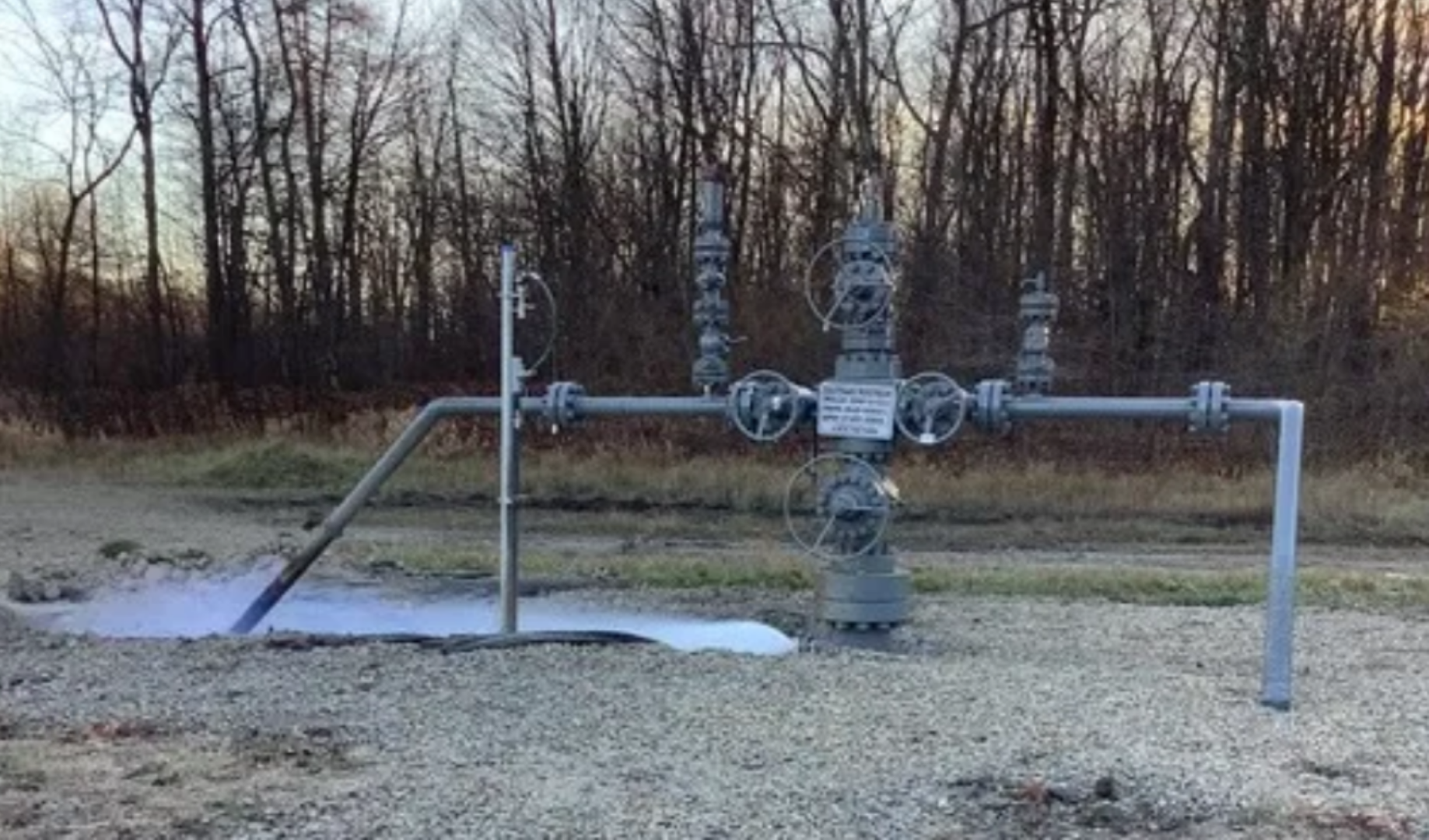
The Pa. Department of Environmental Protection took this photo of the leak at the Rager Mountain storage facility as part of its investigation.
Pennsylvania Department of Environmental Protection


The Pa. Department of Environmental Protection took this photo of the leak at the Rager Mountain storage facility as part of its investigation.
Pennsylvania Department of Environmental Protection

Pennsylvania Department of Environmental Protection
The Pa. Department of Environmental Protection took this photo of the leak at the Rager Mountain storage facility as part of its investigation.
Late Thursday, Equitrans Midstream announced that its contractor had managed to flood a well at its Rager Mountain storage site and stop the leak of natural gas.
But early Friday, the company reported to the Pennsylvania Department of Environmental Protection that “overnight pumping operations of brine ceased and the well returned to releasing gas to the atmosphere,” said Lauren Camarda, a DEP spokeswoman, in an email.
The leak was first reported Nov. 6.
State records indicate the DEP conducted a routine inspection of the well just 10 days before that, on Oct. 26. The inspector wrote that no gas was detected, and all appeared in order.
“The wellhead is secured behind a locked fence. No leaks or spills were observed,” oil and gas inspector Ivan Virruet reported.
The company reported “a preliminary, conservative estimate” that the well was losing 100 million cubic feet a day. That would put the leak in the company of other major gas leaks in recent years. It is the same rate of gas flow for a 2018 incident in which a well in Belmont County, Ohio, blew out. It is higher than the rate of loss from the 2015 methane leak at the Aliso Canyon gas storage site near Los Angeles, the largest methane accident in US history. That leak took four months to close.
Methane, the main component of natural gas, is a highly potent greenhouse gas, 80 times more powerful than carbon dioxide over short time periods.
Equitrans says it doesn’t know what caused the leak. Residents near the site were warned about the leak, but there were no evacuations. A no-fly zone was established within one mile of the site, north of Johnstown, according to the Pennsylvania Department of Environmental Protection.
According to a report filed by the DEP, agency inspectors arrived at the site on Nov. 7, and wrote that the “uncontrolled release from the well was ongoing.” The inspection report noted the company was issued four violations, including one for venting “gas to the atmosphere that produced a hazard to the public health and safety,” and that the company had retained a well control service company that would try to stop, or “kill” the well with brine, a salty liquid produced by oil and gas drilling.
Equitrans has reported that the leak was observed from a 1 ⅝” – inch vent in one of the wells at the facility. The contractor it hired to stop the flow of gas, Cudd Well Control, encountered problems with weather patterns and an obstruction in the well bore they tried to close down. The company has been withdrawing gas from four surrounding wells to relieve pressure from the storage site.
The company stores about 9 billion cubic feet of gas at the site, which includes 10 storage wells and two observational wells. It was built over a depleted gas field that was first developed in the 1960s and later retrofitted to store gas.
Equitrans says it will conduct a “full root cause investigation and analysis once the plugging operations have concluded” and that the company didn’t know when the facility would be back in service.
The DEP has inspectors at the site, and says it continues to request information from Equitrans on its plans to regain control of the well.
StateImpact Pennsylvania is a collaboration among WITF, WHYY, and the Allegheny Front. Reporters Reid Frazier, Rachel McDevitt and Susan Phillips cover the commonwealth’s energy economy. Read their reports on this site, and hear them on public radio stations across Pennsylvania.
(listed by story count)
StateImpact Pennsylvania is a collaboration among WITF, WHYY, and the Allegheny Front. Reporters Reid Frazier, Rachel McDevitt and Susan Phillips cover the commonwealth’s energy economy. Read their reports on this site, and hear them on public radio stations across Pennsylvania.
Climate Solutions, a collaboration of news organizations, educational institutions and a theater company, uses engagement, education and storytelling to help central Pennsylvanians toward climate change literacy, resilience and adaptation. Our work will amplify how people are finding solutions to the challenges presented by a warming world.